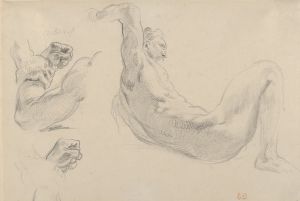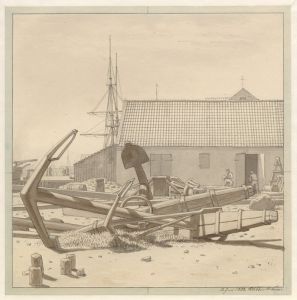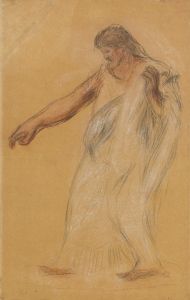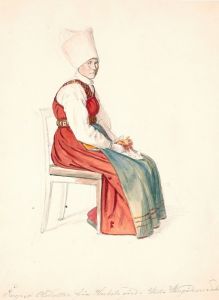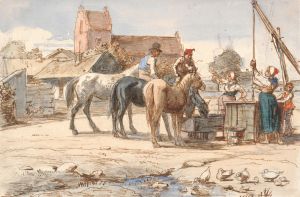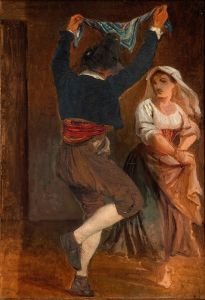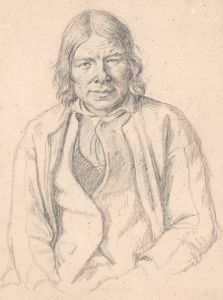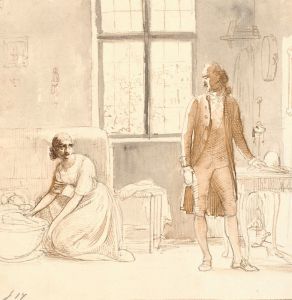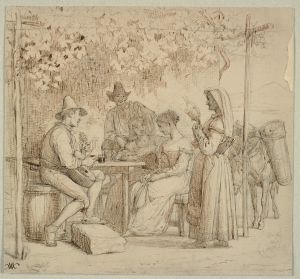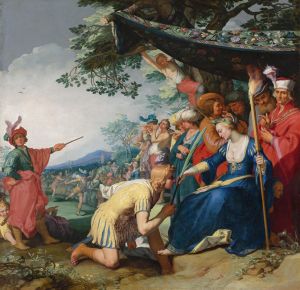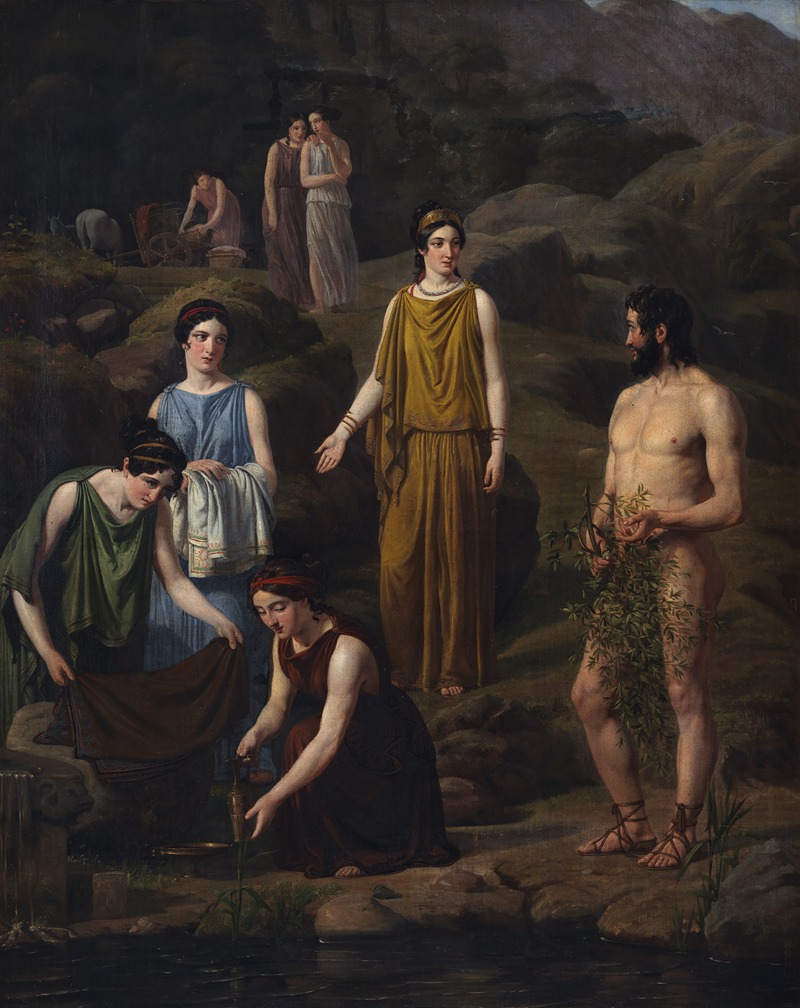
Nausikaa bringer den skibbrudne Odysseus klæder
A hand-painted replica of Wilhelm Marstrand’s masterpiece Nausikaa bringer den skibbrudne Odysseus klæder, meticulously crafted by professional artists to capture the true essence of the original. Each piece is created with museum-quality canvas and rare mineral pigments, carefully painted by experienced artists with delicate brushstrokes and rich, layered colors to perfectly recreate the texture of the original artwork. Unlike machine-printed reproductions, this hand-painted version brings the painting to life, infused with the artist’s emotions and skill in every stroke. Whether for personal collection or home decoration, it instantly elevates the artistic atmosphere of any space.
Wilhelm Marstrand's painting "Nausikaa bringer den skibbrudne Odysseus klæder" (Nausicaa Bringing Clothes to the Shipwrecked Odysseus) is a notable work of art that depicts a scene from Homer's epic poem, the Odyssey. Created in 1847, this painting is a fine example of Marstrand's skill in capturing dramatic and emotional moments from classical literature.
Wilhelm Marstrand (1810-1873) was a Danish painter and illustrator, renowned for his contributions to the Danish Golden Age of painting. He studied at the Royal Danish Academy of Fine Arts in Copenhagen and later traveled extensively in Europe, including Italy, where he was influenced by the works of the Renaissance and Baroque masters. Marstrand's oeuvre includes a wide range of subjects, from genre scenes and portraits to historical and literary themes.
The painting "Nausikaa bringer den skibbrudne Odysseus klæder" illustrates a pivotal moment from the Odyssey, where the hero Odysseus, after being shipwrecked and washed ashore on the island of Scheria, is discovered by Nausicaa, the daughter of King Alcinous. In the epic, Nausicaa, accompanied by her maidens, finds Odysseus naked and exhausted on the beach. She provides him with clothing and guides him to her father's palace, where he receives hospitality and assistance to continue his journey home to Ithaca.
Marstrand's depiction of this scene is characterized by its attention to detail and the emotional intensity of the moment. The composition centers on the interaction between Nausicaa and Odysseus, highlighting the compassion and kindness of the young princess. The painting captures the contrast between the vulnerability of the shipwrecked hero and the grace and dignity of Nausicaa. Marstrand's use of light and color enhances the dramatic effect, creating a vivid and engaging portrayal of this classical narrative.
The painting is part of the collection at the Statens Museum for Kunst (National Gallery of Denmark) in Copenhagen. It is considered one of Marstrand's masterpieces and a significant example of 19th-century Danish art. The work reflects Marstrand's deep understanding of classical literature and his ability to translate these timeless stories into visual art.
Marstrand's "Nausikaa bringer den skibbrudne Odysseus klæder" not only showcases his technical prowess but also his ability to convey complex human emotions and interactions. The painting remains an important cultural artifact, offering insight into the artistic and literary interests of the Danish Golden Age and continuing to captivate audiences with its timeless beauty and narrative power.








